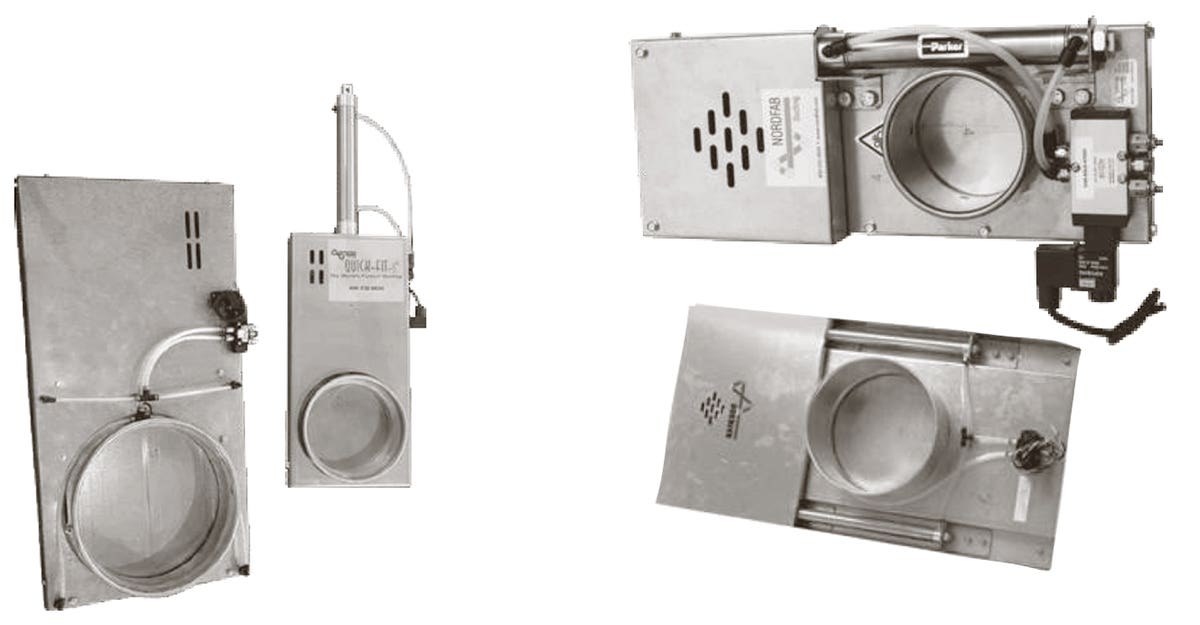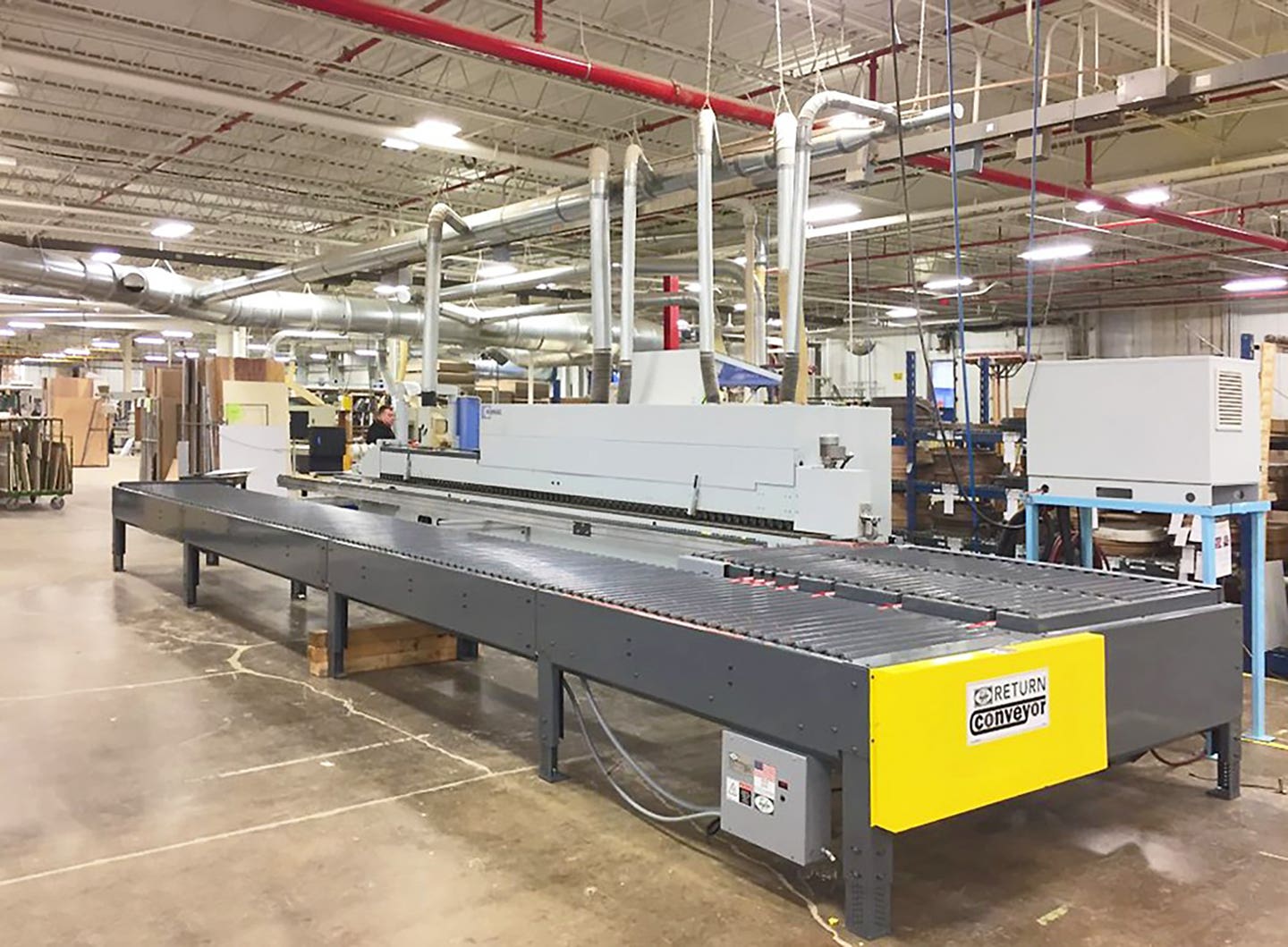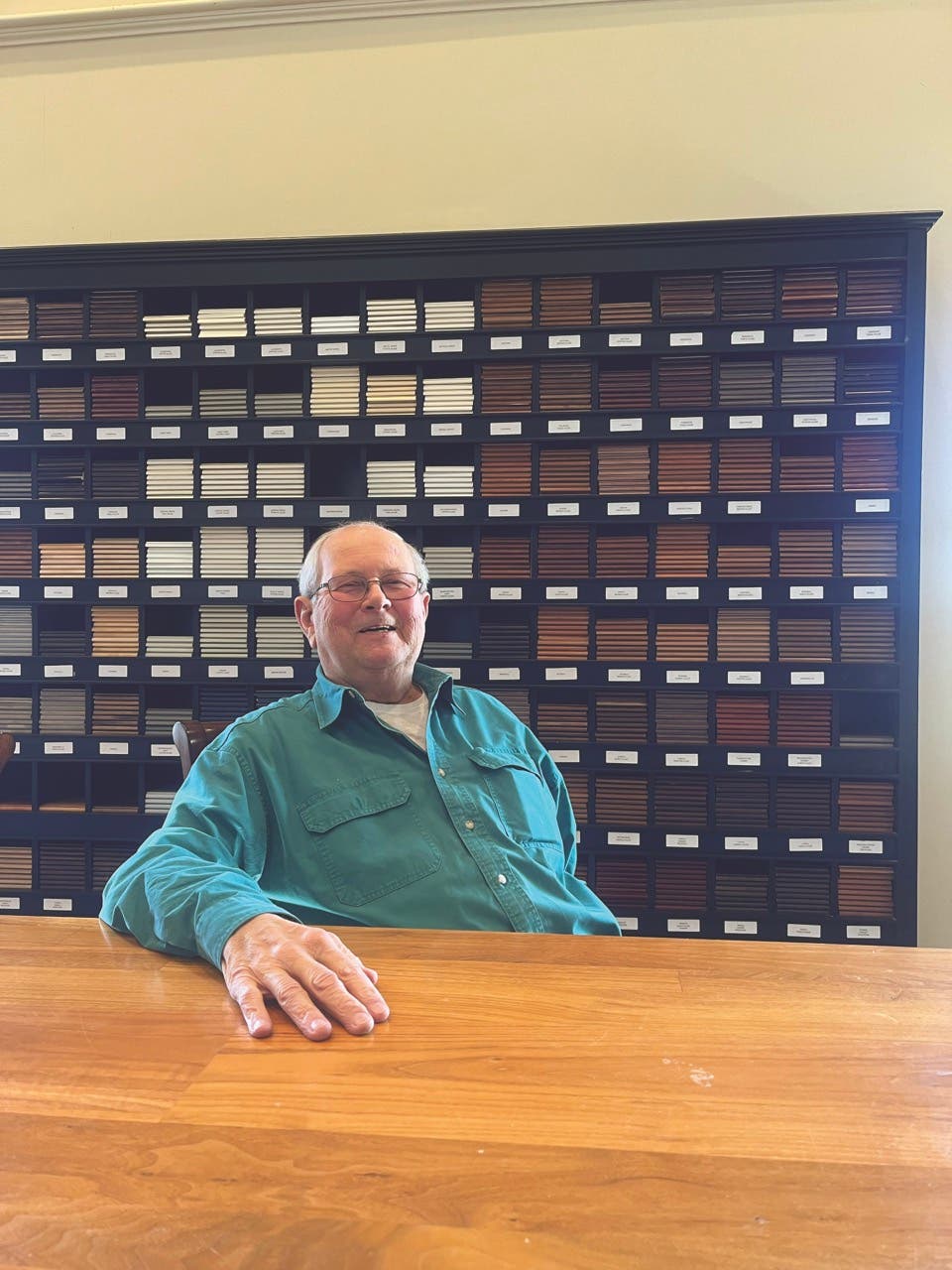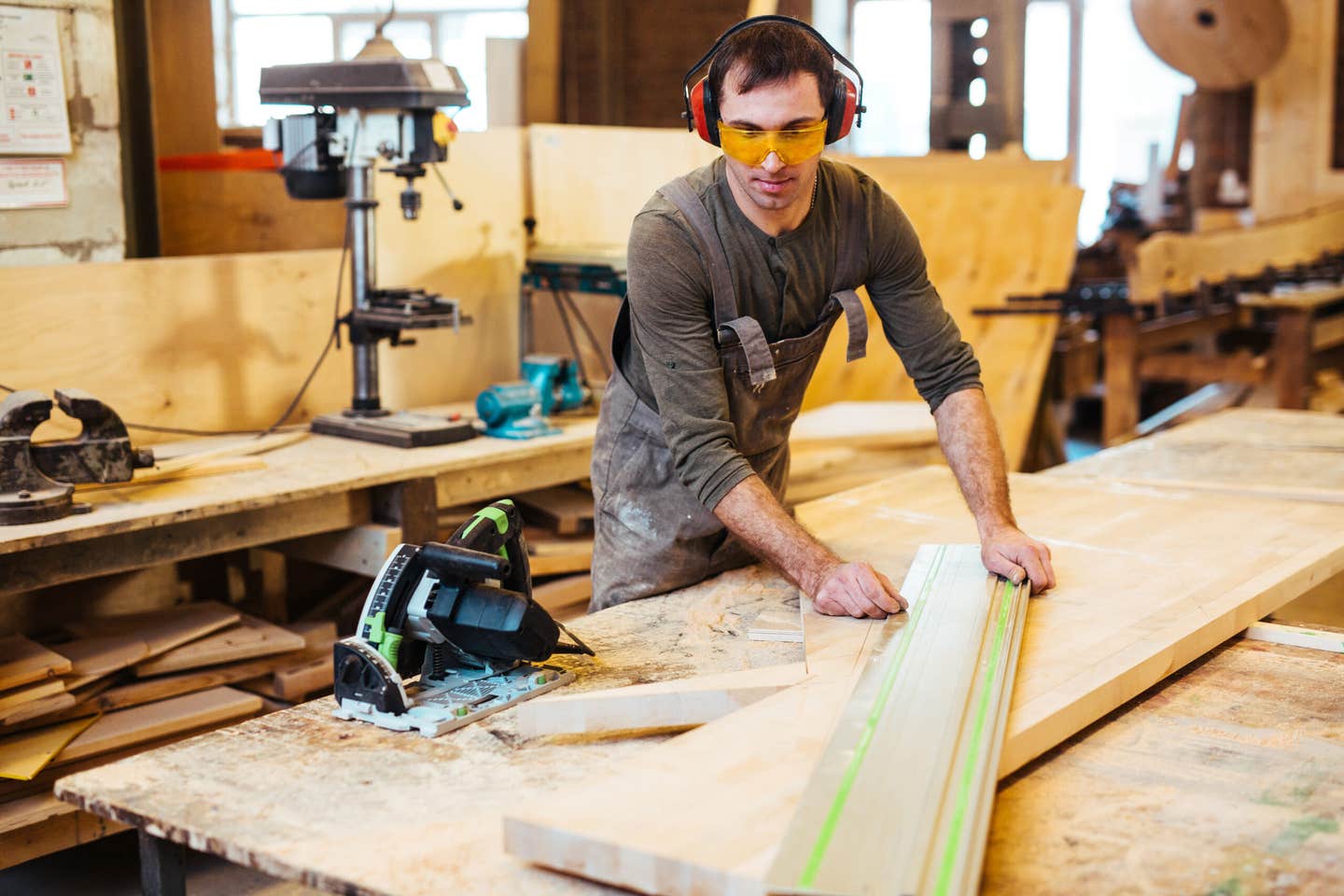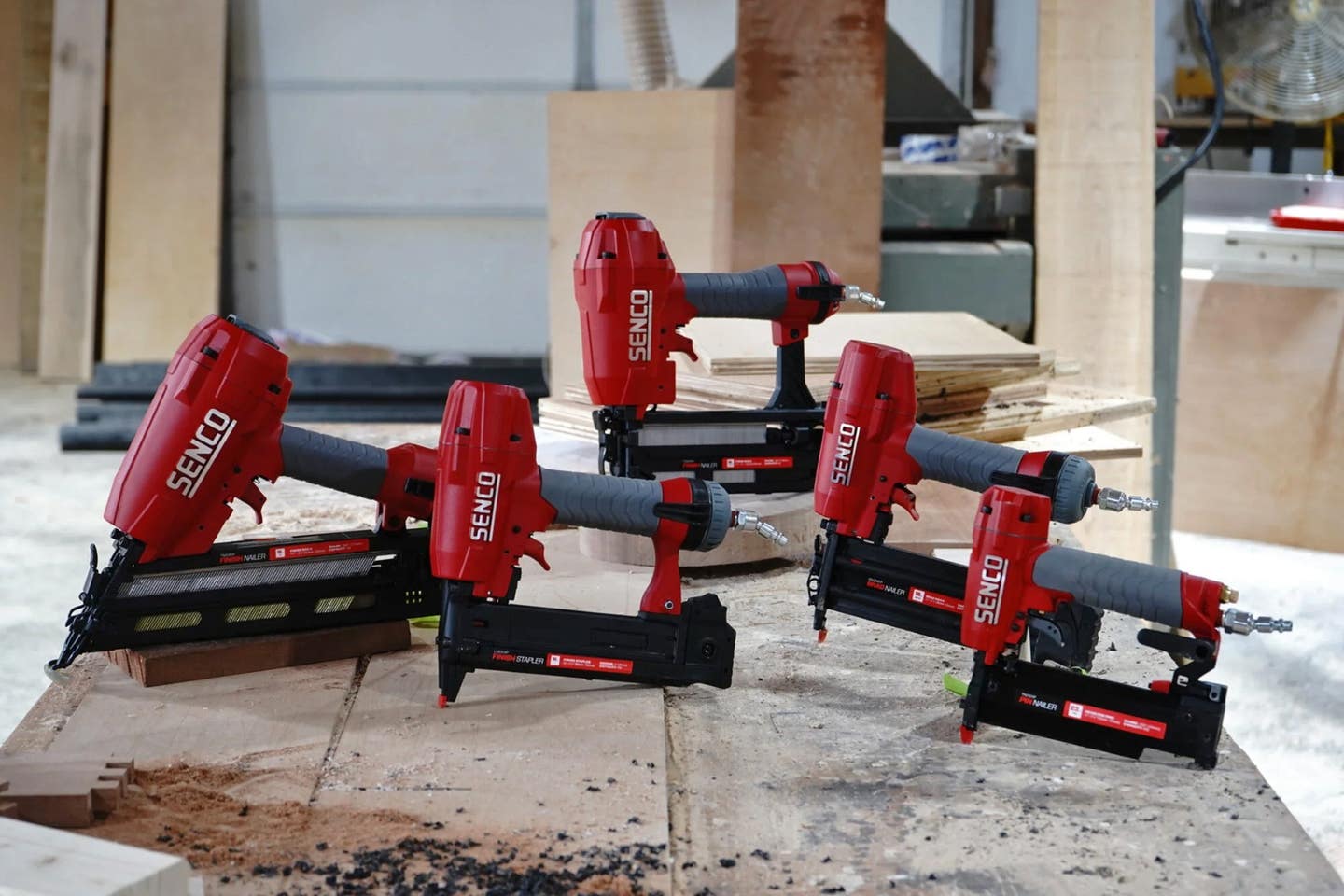Ordering out
There’s a widely held notion that America doesn’t actually make things anymore, but that couldn’t be further from the truth. According to the World Bank, America’s GDP —the sum of…
There’s a widely held notion that America doesn’t actually make things anymore, but that couldn’t be further from the truth. According to the World Bank, America’s GDP —the sum of all goods and services produced within a country — was at an all-time high of $16.8 trillion last year.
That amounted to 27 percent of everything produced on the entire planet. The next closest economy was China’s at $9.2 trillion (not quite 55 percent of the U.S. total). What is truly amazing about these numbers is that the U.S. represents a mere 3 percent of the world’s population.
While American industry is obviously alive and well and still leading the world by a large margin, what has changed is the way in which we make things. Fifty years ago, a lot of products in the cabinet and furniture industry were made by hand or with minimal automation. Because of that, volume was low and prices were high. Most custom cabinetry went into upper-end homes that were often designed by architects and those casework boxes were all built individually. For most tract homes, “factory” cabinets were good enough.
Today, the word custom applies more to design, finish and installation than the production process. Even the smallest shops are now outsourcing components, rather than building everything in-house and by hand. Many shop managers began outsourcing when they needed to solve a single short-term problem that was due to some budget or deadline issue. Perhaps they had to get a kitchen installed by a certain date or deliver a job under a certain budget. But after that first experience of ordering out parts, a lot of woodshops continue to outsource for another reason. The quality of products being made by component manufacturers is so impressive now that shop owners and managers understand they can’t always deliver the same degree of excellence in-house — at least not for the same money.
The components being outsourced have changed quite a bit, too. The practice began in the 1970s with doors and drawer fronts and then some suppliers began to manufacture drawer boxes on demand. Now, entire integrated cabinet systems allow a kitchen to come to the shop in a flat pack on a couple of pallets and the package includes everything from pre-cut moldings to pre-finished appliance panels. And it’s not just kitchens. Some casework manufacturing systems are so flexible that almost any need can now be met, including commercial options that embrace everything from institutional millwork to retail displays. And beyond the range of solutions being offered, there are several other advantages to outsourcing from a shop owner’s point of view.
Time is money
The first big advantage is the amount of time being saved. By allowing a components supplier to handle all of the “standard” construction, a small-shop owner (or a project manager in a larger organization) can concentrate on aspects of the business other than box building. These might include having time to meet new customers, do bids, tackle difficult installation challenges or even create unique design details that set the shop’s work apart. That can include elements as diverse as wine racks or pantry storage that needs to conform to non-standard dimensions, such as an existing alcove. Extra time can free up a principal to handle other one-of-a-kind aspects of the job, too, such as dealing with subcontractors or bureaucrats. It provides an opportunity to start the drawings for the next job or learn new CAD/CAM software, perhaps research hardware or finishing options and do the thousand other things that define progress and allow a shop to grow.
“We build some cabinets in-house,” says Conor McInerney, a project manager for a New York-based commercial contractor. “But being able to order most of the job from a company that does nothing but build components really speeds things up for us. My guys aren’t in the shop doing something we’re good, but not great, at. They’re out on the site installing, which helps us stay on track and on budget.”
Extra time allows cabinetmakers to learn and attend to the business side of their business, too, instead of spending most of the day in the shop trying to keep jobs on track. Owners of small shops especially don’t spend all of their time making sawdust. They must also wear several other hats including salesperson, bookkeeper, buyer, draftsman and even custodian. By outsourcing some (and on occasion all) of a kitchen or commercial job, they can find time to enter checks in the accounting software, create and place advertising, do estimates or even run to the landfill.
Growing up
Outsourcing lets a shop increase production without having to invest in new infrastructure. On the smallest scale, a shop that wants to expand from building one job at a time to two needs to have enough physical space for all of the assembled casework for two kitchens, plus room to store the extra raw inventory (sheet goods, boards and so on) and enough square footage to set up extra assembly and finishing stations. The shop might also need to add CNC capacity or maybe just an extra sliding table saw. Managing the extra inventory might also require investing in a new forklift or, at the very least, a new pallet jack and shelving. And increasing the amount of physical space means increasing the light bill, heating and cooling costs, dust collection, insurance and a host of other scale-related costs.
Staffing for an in-house expansion also involves extra cost and time expenditures. When it comes to people rather than machinery, it’s not just a one-time infusion of capital. It’s ongoing overhead that will need to be paid every month, even in slower times. Beyond increasing the payroll, there are implications for workers’ comp, unemployment insurance and, of course, new management (somebody has to supervise the trainees). And with the new healthcare regulations, a shop needs to pay attention to how many full- and part-time staff members are on the payroll and how those numbers can affect the company’s obligations to provide health insurance.
Then there’s training itself, which not only means that the new members of the team are operating at less than their full capacity for several months until they get up to speed, but old hands are also working at a diminished rate because they’re taking time from production to teach.
Outsourcing also helps smooth out the business cycle. Every shop has to deal with seasonal variations. Construction of new homes and commercial structures are often related to climate, especially in Northern markets where weather can affect foundation or utility work. When building is booming, a shop manager can instantly increase the amount of work passing through the shop during those times by outsourcing cabinet and furniture components. And in slower months, the manager can keep the crew fully occupied by building everything in-house. Keeping trained people on staff is essential to the success of any business and having to resort to seasonal layoffs is a surefire way to encourage talented people to apply for jobs elsewhere.
Hidden advantages
When a cabinet shop is preparing a commercial bid for a large project — maybe a school or a hospital — outsourcing can help simplify the process, save a fair amount of numbers-crunching time and even avert some possible errors. The components supplier will generate a set price for that part of the bid being outsourced. The cabinetmaker simply has to forward the specs and the supplier will then work out the cost. That number can then be incorporated into the bid without having to do a separate, detailed estimate for in-house time and materials. All it needs is the application of a multiplier (the markup that compensates the cabinet shop). By having two sets of eyes looking at the blueprints (the woodshop owner’s and those of the estimator at the components supplier), the chance of overlooking a wall of cabinets or perhaps a few passage doors or lockers is significantly reduced.
Assembly time can be an overlooked cost benefit. When a flat-pack component package arrives at the woodshop, the parts are usually precision-machined so they fit perfectly together without adjustment. That makes for fast assembly. Where cabinetmakers and furniture builders once spent hours shaving miters or mortises for a perfect fit, today’s outsourced components almost universally assemble fast and in a relatively foolproof manner. Suppliers have engineered the joinery so that it has been reduced to snapping together or involves tucking tabs into slots. Some packages are assembled with custom hardware such as plastic cams that lock into place or threaded inserts that were developed by knockdown furniture manufacturers. Other assembly techniques were born in the laminate flooring industry, where profiled tongues snap into matching grooves.
Shipping can be a hidden benefit, too. Whatever the joinery method, the ability to assemble casework or drawers quickly with minimal tooling opens up the option of having components shipped directly to the job site and assembled there. This means the woodshop doesn’t even have to provide floor space for a second kitchen, let alone all the utilities and other costs involved in a physical expansion. It also means that items are handled less — and by fewer people — so that’s a hidden cost saving, too. The economy there lies in not having to unload a couple of pallets from a semi at the shop and then load them again in the woodshop’s vehicle to haul them to the job site.
Pre-finishing
This is perhaps one of the greatest advantages to subcontracting the manufacture of components. If parts can be ordered pre-finished, a shop doesn’t have to inventory a wide array of stain, sealer and topcoats. The owner doesn’t have to train people in the spray booth. The woodshop crew doesn’t have to wait for solvents to evaporate or even spend time sanding between coats.
Pre-finishing makes shipping directly to the job site possible. And not having to spray in-house usually eliminates at least one payroll employee. Because of the sheer volume going through its factory spray booth, the component supplier’s trained people will generally deliver a color-matched product with virtually no variations, such as the tonal disparities that are sometimes apparent between heart and sapwood or even those between different cans of stain. Its finishing expert isn’t building cabinets all week and just spraying once or twice a month. He is doing it all day every day and that kind of practice generates perfection.
A woodshop that buys components already coated can probably get by with a much smaller spray booth in-house. That means there’s a smaller initial investment in both the booth itself and the compressor and guns. But because this relatively volatile activity is now a smaller part of the overall production process and involves fewer employees, it could affect the woodshop’s workers’ compensation classification and even end up in a reduction in the cost of the policy.
Skilled labor savings
It takes many years to become an accomplished cabinetmaker. One not only needs to understand the intricacies of every piece of equipment and hand tool, bit and blade in the shop, but also the vagaries of wood, sheet goods, veneers, adhesives and finishes. Today, that includes the ability to operate computers and CNC equipment.
On the other hand, it only takes a day or two to train somebody who is reasonably competent to assemble a batch of pre-built, pre-finished cabinet components. Often, they only need to understand a glue bottle and pin nailer. Most systems don’t even require clamping, let alone machining.
The difference in payroll expense between a professional cabinetmaker and a relatively unskilled worker who only needs to understand a single component supplier’s assembly process can be quite significant.
Training an entire crew to assemble boxes and drawers can take one or two projects at the most and, as there are no longer any key players who are extremely skilled in a single part of the construction process, the shop is no longer vulnerable if one person doesn’t show up for work. Even in situations where the shop adds significant customized value to a factory package (perhaps with curved, turned or carved parts), the skilled labor that creates those special elements can usually work on a separate schedule, so a day’s absence doesn’t stop production. The rest of the crew can keep building boxes.
Of course, the line between cabinetmaker and assembly crew isn’t always obvious. For example, most manufacturers of components will supply detailed CAD drawings to guide the assembly team.
On complex jobs, it might require a relatively skilled person to read and interpret those drawings. If the shop is large enough, there might be two or more teams working on multiple projects and the project managers will usually be able to switch between jobs to cover an absence and keep things on track. In small shops, however, the owner will need to be familiar with the component supplier’s CAD drawings, and become the go-to person in the shop, and on the job site when a team leader isn’t available.
Warranties and turnaround
Cabinet and furniture component manufacturers stand behind their product and this creates an opportunity for a small custom shop to pass along some peace of mind to its customers. If something such as a drawer or a corner joint fails within a few months of installation, the component supplier will usually fix the problem or make it easy for the woodshop to do so. A shop that is approaching a new outsourcing partner should discuss this process before placing its first order and it needs to be very clear who is responsible for what.
If, for example, the subcontractor supplied both the cabinet carcass and the drawer, but didn’t install the slides, then there should be an understanding in place that lets both parties know who is responsible for a failure. Depending on what that is, outsourcing can be a way for woodshops to mitigate some of the responsibility for warranty coverage on a custom project.
Outsourcing can also improve customer relationships in the area of turnaround time. While it can take weeks and often months to schedule a complete custom kitchen in-house, bringing in the components can speed everything up dramatically in all aspects of the project. The cabinetmaker doesn’t have to generate shop drawings, order and wait for hardware or hardwoods to arrive, spend the time actually building doors, boxes or drawers, wait for finishes to cure and so on.What would have taken months can often be reduced to weeks and, in some cases, even a matter of days.
Outsourcing is part of a new era of mass production, where a combination of CNC technology and innovations in materials are providing a new palette of solutions for custom woodshops, allowing them to be more competitive, more creative and more profitable.
This article originally appeared in the November 2014 issue.



